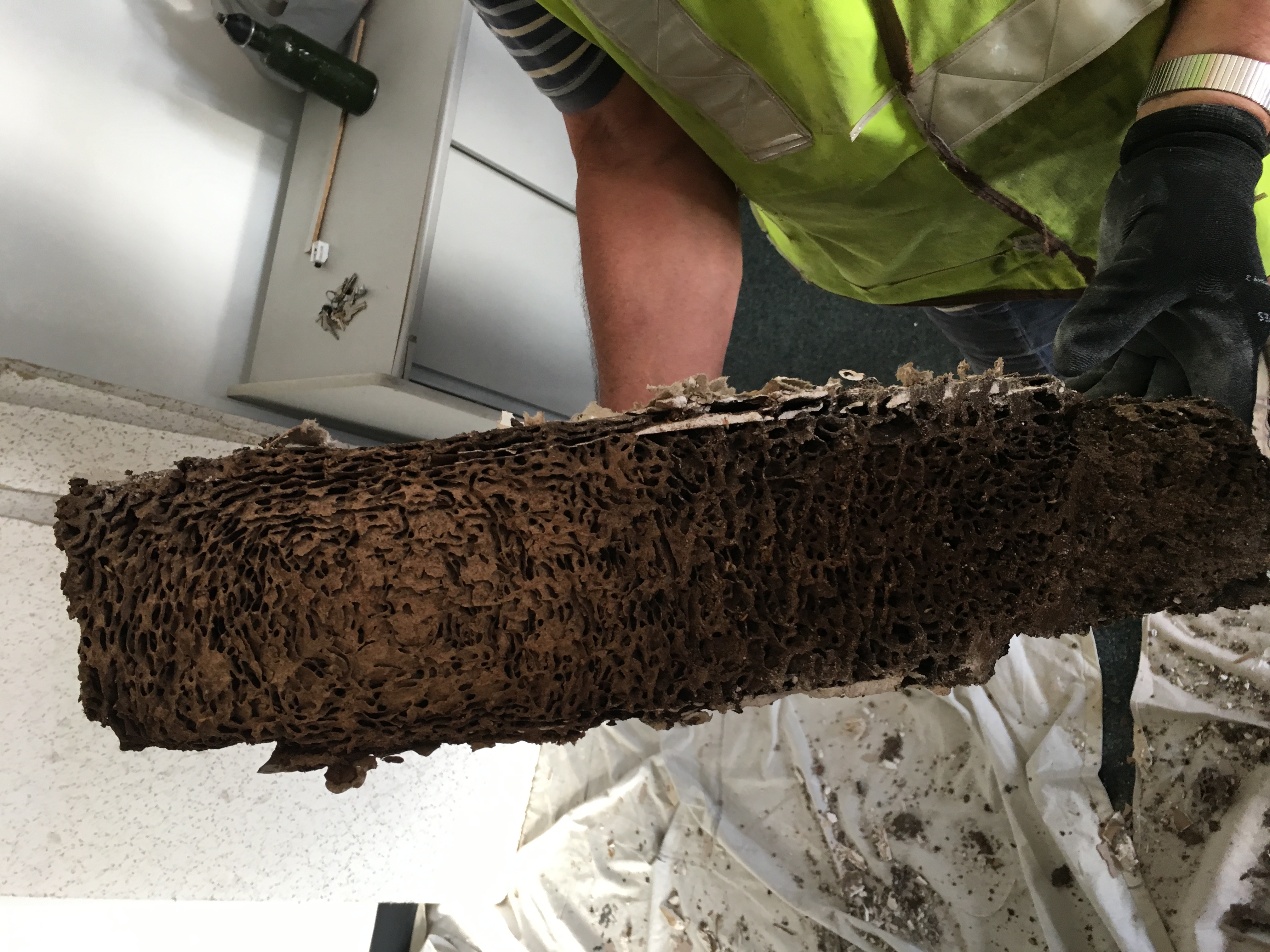Termite Control & Pest Control Northern Suburbs
Commonly mistaken for ants, termites are classified in the same order as cockroaches. However, it is unsurprising that these pests are known as “wood ants” or “white ants”, as certain termite species have been known to cause great damage to homes and structures.
The eusocial termite builds complex colonies. For this reason, they are known as ‘superorganisms’, as the individual insects form part of a self-regulating entity: the colony itself. These colonies live in nests that are composed of two parts: the inanimate (still) and the animate (living). The inanimate nest consists of all the termites living inside the nest, while the inanimate nest is the structure itself, made usually from termite faeces (partly digested plant matter). However, when these insects take up residence in the walls of a home, the worker mites go about consuming the wooden structure to build their nest. This often has dire and expensive consequences for homeowners.

As termites prefer warmer climates, they are common to Australia. With Melbourne experiencing higher than usual temperatures, termite damage has been on the rise for the past two years. As their nests are often inconspicuously located within the structure of the building, it is not always easy to spot the termites’ well-hidden colony. However, factors that indicate your home may be the victim of these pests include: a clicking sound of the termites eating; flying or swarming termites (fertile male and females) that have left the nest to build a new colony; hollow sounding timber; tight fitting doors and windows caused by moisture the termites leave in the wood as they eat; fine tunnels in wood that falls from the house; droppings (frass) left behind from drywood termites that push their faeces outside instead of using it to build a nest (like other varieties of termite).
Homeowners can reduce the risk of a termite attack by:
Eliminating wood contact with the ground. If the structure of your home meets the ground, termites have the perfect pathway into the structure of the building. Sidings, latticework, window frames and other wooden items should be maintained approximately 30 centimetres above the ground to reduce the risk of this pathway.
Reducing moisture build-up at the foundation of your property. Like many other insects, termites are attracted to sites where there is an easily-accessible water supply. Water should be diverted away from the building with well-constructed gutters, spouts and splash backs, as leaking faucets and outlets will only encourage these pests to move into your property.
Lowering humidity is the crawl space beneath your home. Crawl space, or the area beneath a house, should be ventilated to reduce the humidity that termites thrive in. Vents should be kept free from dirt, leaves and debris, as to encourage air flow and cooling.
Excess wood and plant matter should be removed from the close perimeter of your home. Excess wood such as rubbish, mulch, vegetation and fire wood should not come in contact with the crawl space or foundation. A build-up of this material encourages termites to nest and move into the structure of your home.
As Melbourne has reached higher than usual levels of infestation over the past two years due to warmer weather conditions, it is important to prevent termites attacking your home or work property. If you anticipate your property has become infested with this destructive guest, call the expert termite removers at Right Pest Control on 0478 308 361. We will assess the termite problem and carry out the safe and necessary measures to eliminate termites causing further damage to your property.







